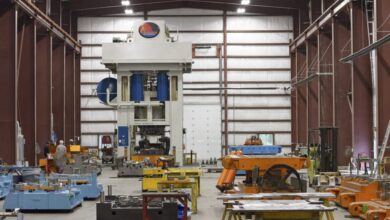Building Information Modelling Explained: Benefits, Challenges, and Future Trends

Building Information Modelling (BIM) is transforming the architecture, engineering, and construction (AEC) industry. As a process that involves creating and managing digital representations of places’ physical and functional characteristics, BIM is quickly becoming a central tool in modern construction.
BIM’s ability to streamline project workflows, reduce costs, and enhance collaboration makes it a game-changer for construction teams worldwide. In this article, we’ll explore BIM, its key benefits, the challenges it presents, and the exciting future trends shaping its use.
What is BIM?
BIM is more than just a technology or a piece of software—it’s a process and a methodology that incorporates intelligent 3d modelling to enhance the design, construction, and operation of buildings.
In essence, it’s a collaborative approach where various stakeholders, such as architects, engineers, contractors, and owners, work together on a single platform that houses all the data and information related to a building’s life cycle.
BIM helps create accurate digital models of buildings and aids in visualising, simulating, and optimising the construction process. With BIM, every aspect of a building can be visualised in three dimensions (3d), and the model can include time (4d), cost (5d), sustainability, and operational data.
It’s about improving decision-making, boosting efficiency, and creating an integrated platform for every phase of a building’s life cycle—from design to operation.
Benefits of BIM
The growing adoption of BIM across the AEC industry is largely due to its numerous benefits. These advantages make BIM indispensable for modern construction projects, whether large or small.
1. Enhanced Collaboration and Communication
BIM fosters collaboration between architects, engineers, contractors, and owners. The platform’s real-time sharing capabilities allow all team members to access the same information, eliminating confusion and miscommunication.
Instead of relaying information via emails and phone calls, everyone involved in the project can view updates, adjustments, and feedback on the central model. This streamlined communication ensures everyone is on the same page, reducing errors and project delays.
For example, during the construction of a large office building in Melbourne, the contractor and architect identified a potential issue with the plumbing layout through the BIM model before the building process began. This saved valuable time and money, as the problem was fixed virtually before it became a costly issue on-site.
2. Improved Accuracy and Efficiency
Traditional design and construction methods are prone to human errors, leading to costly mistakes and rework. BIM helps mitigate this risk by ensuring that the design is precise from the start. By using accurate and detailed 3d models, teams can detect errors early, allowing for corrections before construction begins. The result is a significant reduction in rework and a more efficient process overall.
Take, for instance, the case of a recent residential development project in Sydney. Using BIM, the project team detected several conflicts between the building’s electrical and plumbing systems early on. This proactive approach ensured the project proceeded without costly delays or material waste.
3. Cost and Time Savings
By identifying potential issues and optimising design plans early in the project, BIM helps to avoid expensive changes during the construction phase. Additionally, the use of BIM reduces material waste by providing accurate information on the exact quantity of materials needed.
BIM’s ability to streamline the scheduling process also plays a critical role in time management. With BIM, project teams can better plan and execute tasks, ensuring that work proceeds smoothly and efficiently, leading to faster project delivery.
4. Better Project Visualisation
One of BIM’s most significant advantages is its ability to create realistic, interactive 3d models of a building. These models allow stakeholders to visualise the entire project from the initial design phase to the final product. The ability to see and interact with a project before construction begins helps clients, engineers, and contractors make informed decisions regarding design, materials, and layouts.
Moreover, the visualisation capability helps with client approvals and presentations. Clients can experience their future space virtually, providing them with a clearer understanding of the design and potential changes that could enhance the project’s outcome.
5. Streamlined Facility Management
BIM doesn’t just end when construction is complete; it also plays a significant role in the management and operation of buildings after they’ve been handed over. Through BIM, building owners and facility managers can access detailed information about the building’s systems, components, and maintenance schedules.
For example, a shopping centre in Brisbane uses BIM to track the performance of its HVAC system. Facility managers can access real-time data on the system’s operation, allowing for timely maintenance and reduced downtime. The result is an improved environment for shoppers and significant long-term cost savings.
Challenges of BIM
While BIM offers incredible benefits, it’s not without its challenges. As with any technological shift, its adoption can be difficult, especially for those accustomed to traditional methods of design and construction. Let’s take a closer look at some of the challenges associated with BIM.
1. High Initial Investment
Implementing BIM requires significant upfront investment in both software and training. The software can be expensive, and companies need to invest in high-performance computing systems to run complex BIM models.
Additionally, there is a learning curve associated with using BIM tools effectively, which may require additional training for employees.
2. Data Security Concerns
With multiple stakeholders accessing the same BIM model, data security becomes a concern. Sensitive information about the project’s design and construction can be vulnerable to hacking or misuse if proper security protocols aren’t implemented. Ensuring data security is a critical aspect that must be addressed as BIM becomes more widely adopted.
3. Resistance to Change
For many companies, the transition to BIM can be met with resistance. The shift from traditional methods of drawing and designing to a more digital and collaborative approach can be intimidating, especially for older employees who are used to working with physical blueprints.
Overcoming this resistance and ensuring that all team members are on board with the new process is essential for successful BIM implementation.
Future Trends in BIM
The future of BIM is promising, with innovations that will continue to enhance its capabilities and expand its applications. As technology advances, BIM will evolve to include new features and functionalities, making it an even more powerful tool in the AEC industry.
1. Integration with Artificial Intelligence (AI) and Machine Learning
The future of BIM will likely involve greater integration with AI and machine learning. These technologies can automate many of the tasks associated with BIM, such as data analysis, predictive maintenance, and even design optimisation.
AI can help identify patterns in construction data, predict potential issues, and offer solutions to improve the overall project workflow.
2. Cloud-Based BIM
As cloud computing becomes more ubiquitous, cloud-based BIM platforms will become the norm. These platforms will allow teams to access the BIM model from anywhere, at any time, and on any device. The cloud will make it easier to collaborate with remote teams and ensure that everyone has access to the latest project data in real-time.
3. BIM for Sustainability
With growing concern for sustainability, BIM will play a key role in creating energy-efficient buildings and reducing the environmental impact of construction projects.
Through advanced simulations, BIM can model a building’s energy consumption and suggest ways to improve its efficiency. It can also assess materials’ carbon footprint and help teams choose more sustainable options.
4. Automation in Construction
Construction automation is expected to grow, with BIM serving as the backbone for automating many aspects of the building process. From robotic bricklayers to automated 3d printing, BIM will help coordinate these technologies and ensure that construction is carried out precisely and efficiently.
Conclusion
Building Information Modelling is revolutionising the construction industry by improving collaboration, accuracy, and efficiency. While there are challenges to overcome, such as initial costs and data security concerns, the benefits far outweigh the drawbacks.
As the technology continues to evolve, BIM will become an even more integral part of the AEC industry, driving innovation and helping to create smarter, more sustainable buildings. The future of BIM is bright, and its impact on the construction sector will continue to grow, offering new opportunities for companies to work smarter, not harder.




